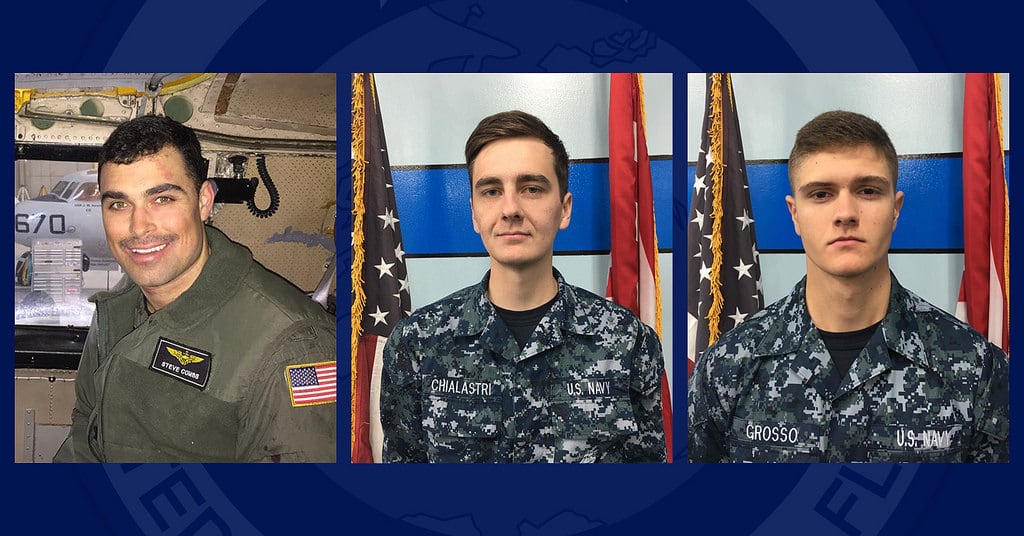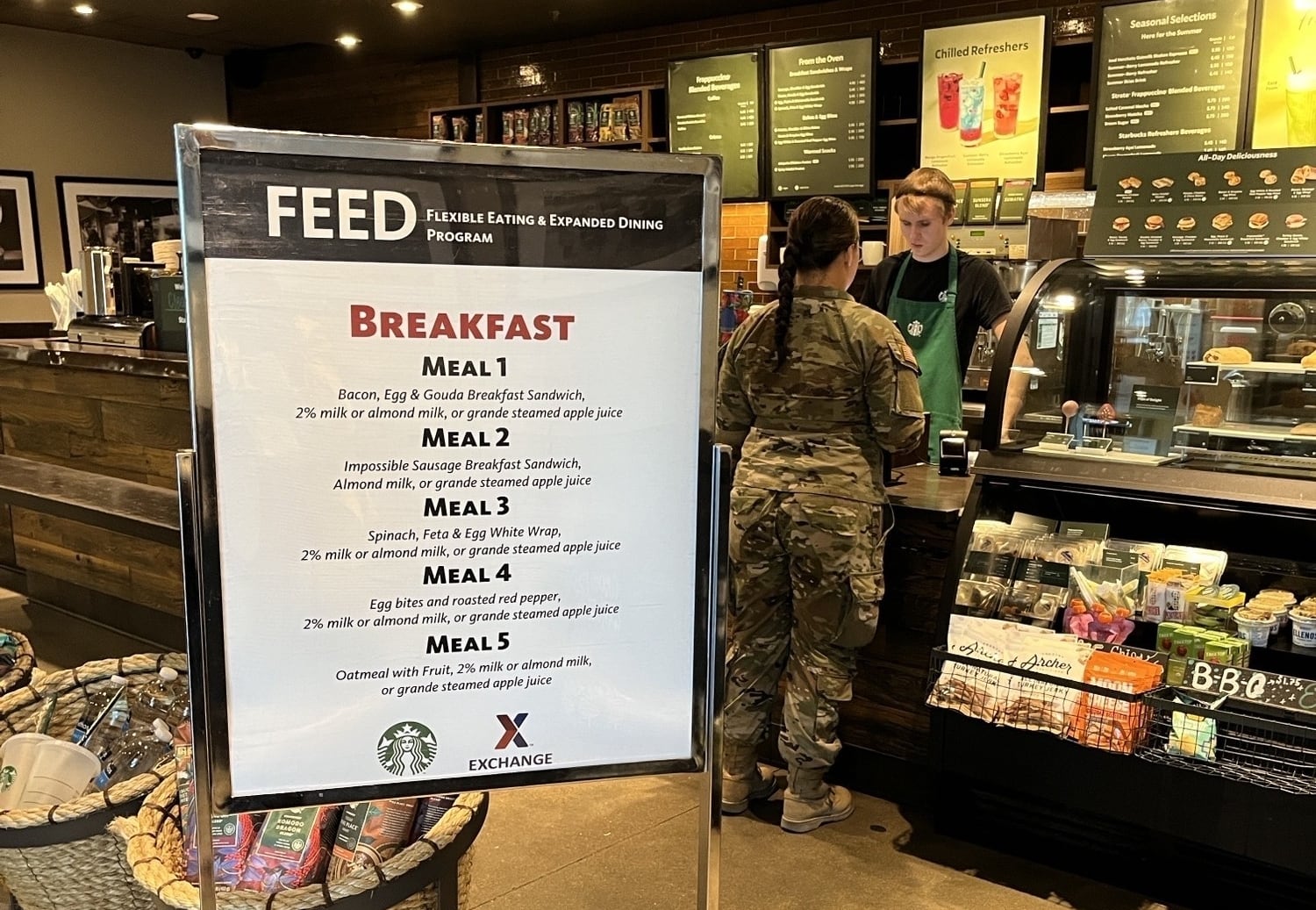Thursday marks one year since a C-2A Greyhound airplane crashed in the West Pacific as it flew to the aircraft carrier Ronald Reagan.
The pilot, Lt. Steven Combs, managed to land the aircraft in the water, and most of the 11 on board were rescued.
But Combs, Aviation Boatswain’s Mate (Equipment) Airman Matthew Chialastri and Aviation Ordnanceman Airman Apprentice Bryan Grosso were never found.
One year later, these fallen sailors and the Greyhound remain at the bottom of the Philippine Sea, roughly three nautical miles below the surface.
While Navy officials say a nearly unprecedented salvage mission remains in the works, the families are still left without answers this Thanksgiving, left to struggle with the absence of their loved one, unsure of why this happened.
Elizabeth Combs, Steven Combs’ older sister, is one of those loved ones awaiting answers.
“But not for us,” she said. “His friends whom he loved dearly are still flying. We never want this to happen to another family.”
RELATED
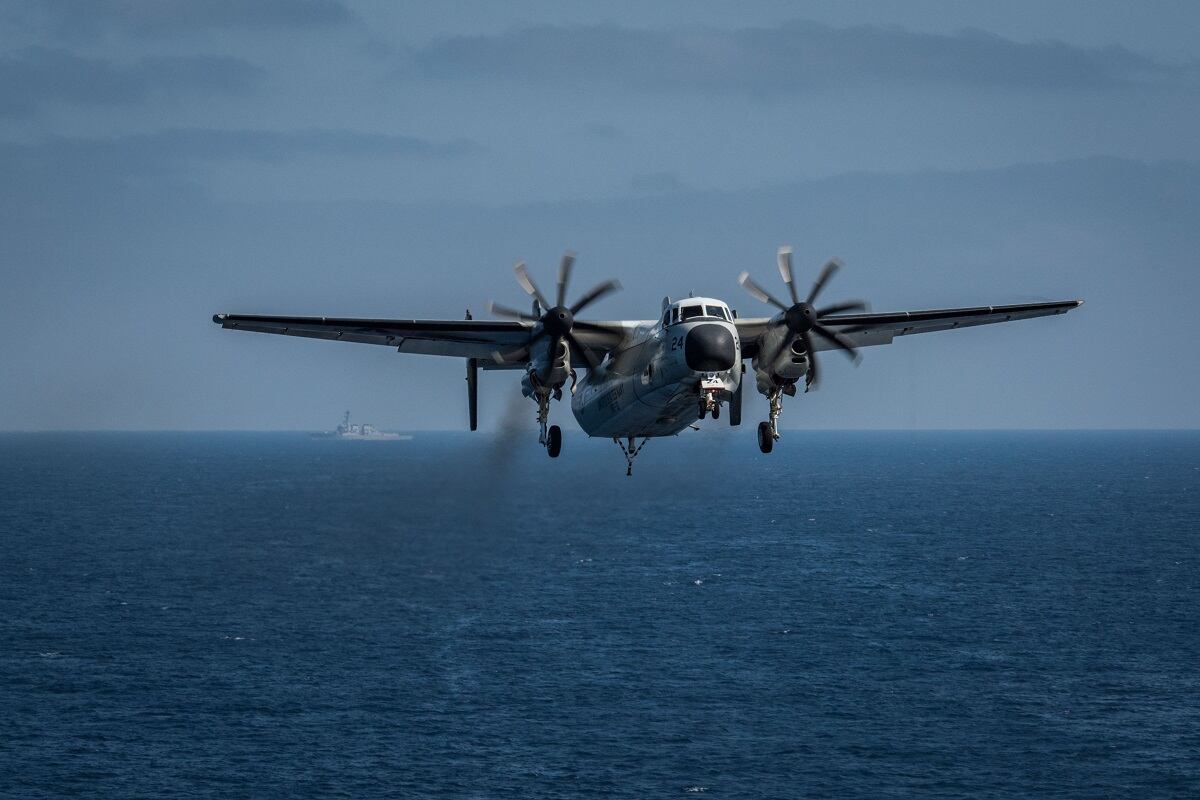
Combs takes a small comfort in the fact that eight of the 11 personnel on board were rescued.
“Someone said once that it was a miracle that eight survived,” Combs said. “It wasn’t a miracle. It was my brother.”
Officials with the Navy’s Japan-based 7th Fleet have offered periodic updates on the mission to recover the lost sailors and the aircraft.
They said a command investigation has been completed, but Combs said her family has not been offered a copy of the report.
The family has not received any kind of official Navy update on the effort in eight months, she said, and they rely on Combs’ unit mates and commanders to keep them posted.
“Stevie was fortunate enough to have wonderful friends, commanders, and a skipper that have kept us informed,” said Combs, an Air Force officer. “Without them, we would be in the dark.”
A recovery won’t be attempted until this spring, according to 7th Fleet spokesman Lt. Joseph Keiley.
Remains of one of the sailors has been located but not identified, he said.
The wreckage sits 18,500 below the surface, and a special winch had to be found for the deep mission.
The Navy sent a special dive team to the site in December. Officials announced that the transport aircraft had been located in February.
RELATED
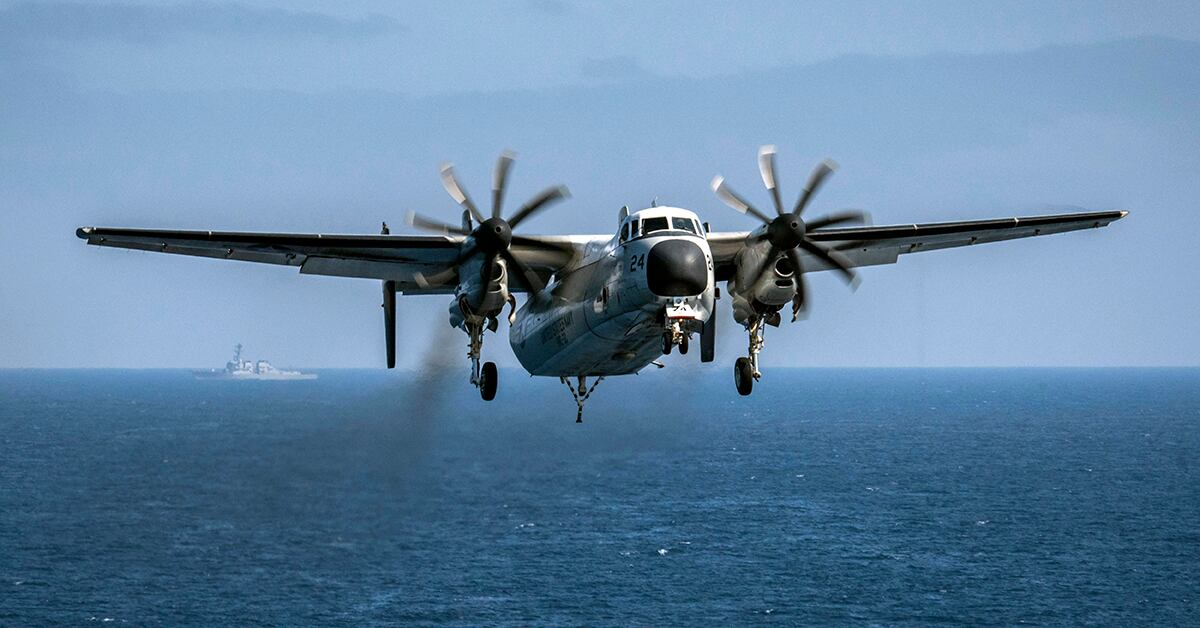
“Despite very challenging conditions, every effort will be made to recover the aircraft and our fallen sailors,” a Navy official told the Associated Press in February.
Keiley said weather is a challenge to the salvage mission and that a contracted vessel still needs to be identified to carry out the operation.
In response to Navy Times questions, he echoed verbatim the same comment given to the AP earlier this year.
“Despite very challenging conditions, every effort will be made to recover the aircraft and our fallen sailors,” he said.
Grosso’s father, Jeff, a retired command master chief and ordnanceman, said he appreciates the fact the Navy is still pressing forward on the daunting recovery mission.
“Until they bring the plane up, we won’t know the whole investigation,” the 51-year-old said. “Three people not getting out, and my son was a very strong swimmer.”
“I feel he was probably in the wrong part of the aircraft when they hit, but I don’t know. I don’t know any of that yet.”
This Thanksgiving, like other families of those who fell in the line of duty, those who loved Combs, Chialastri and Grosso are left with memories and an inconsolable ache at a what is supposed to be a time of joy.
Grosso said he and his wife have no Thanksgiving plans this week, other than visiting their 18-year-old son’s memorial marker at Naval Air Station Pensacola.
“It is a difficult time,” he said. “That old saying, ‘you don’t think it would happen to you or your family,’ really goes a long way.”
“One hell of a pilot”
Growing up in Massachusetts, the youngest child of three with two Navy parents, Steven Combs had wanted to fly “since he knew how to talk,” his sister, Elizbeth Combs, said.
He loved piloting the Greyhound and the challenge involved in landing “on a postage stamp in the middle of the ocean,” she said.
The 28-year-old had initially been wary of getting stationed in Japan, but the assignment was an honor since he was “top stick” in his class, Combs said.
Steven fell in with a group of other pilots and maintainers in Japan who were all named Steve, and when they flew out together, they were the “Flight of Steves,” Combs said.
RELATED
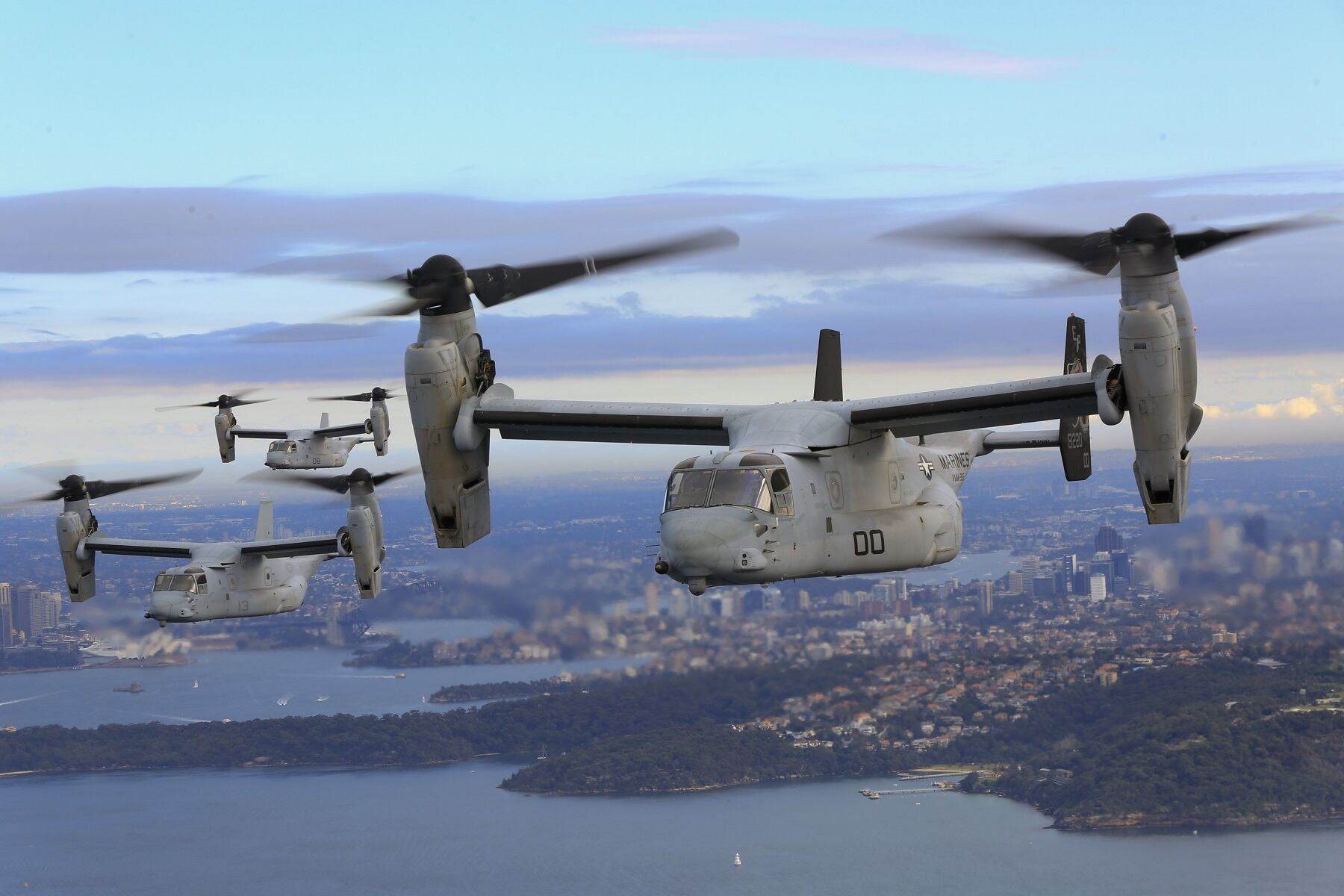
The junior officer was nearing the end of his Japan tour when the crash occurred, his sister said.
While he had made sure to hike Mount Fuji and taken in the solemnity of Hiroshima, he was ready to get back to the states.
The Combs family has seen generosity in the assistance of the Wingman Foundation that helped the family fly to Japan after the accident and assisted in getting Steven’s unit back to the states for his funeral.
At the same time, Combs said their family has had to battle the Navy over Steven’s Servicemember Group Life Insurance.
Steven took in stray dogs, and loved skiing and country music, among other things.
He was kind and compassionate, Combs said.
“Stevie mattered,” she said. “Living a life that matters doesn’t just happen, it’s a privilege and it’s earned.”
“Dad, I got it”
Bryan Grosso was just 18 and new to a life in uniform when the Greyhound crashed.
His father, Jeff Grosso, was also an ordnanceman, and his son had always been fascinated with the military growing up.
“Bryan was determined probably toward the age of five or six to go into the military,” Grosso said. “I was all for it. The Navy provided for my family and I thought that’s a great way for him to start out.”
Bryan loved it when he got in, and he knew what to expect.
“We had long talks about it, how to do a good job,” Grosso said. “He goes, ‘dad, I got it. I totally understand where you were coming from.’”
Bryan adapted to any situation and could make the best of anything.
He played lacrosse in high school and helped his dad with wrenching on cars and household projects.
“Honestly, I think he would have exceeded me,” said Grosso, who did 30 years in the Navy. “He had a great start to his career. He knew what to do and knew how to jump in there.”
Matthew Chialastri’s family could not be reached for this article.
But last year, the Baton Rouge, Louisiana, native’s former high school classmates and teachers remembered him as an effortlessly intelligent student and JROTC cadet who enlisted after graduating in 2013.
“He could have had any scholarship he ever wanted to any school,” classmate Dakota Ball was quoted as saying in The Advocate newspaper. “He could’ve went anywhere he wanted, but he just believed that serving our country was first. That was his everything.”
Chialastri expressed an interest in military history, his former history teacher, Ashley Heyer, told The Advocate.
“I was not surprised when I found out that he had joined the Navy,” Heyer said. “Of course, as a gifted teacher it was my dream that he would take, when he was ready, a path to college and return as an officer because the sky was the limit for him.”
Geoff is the managing editor of Military Times, but he still loves writing stories. He covered Iraq and Afghanistan extensively and was a reporter at the Chicago Tribune. He welcomes any and all kinds of tips at geoffz@militarytimes.com.
